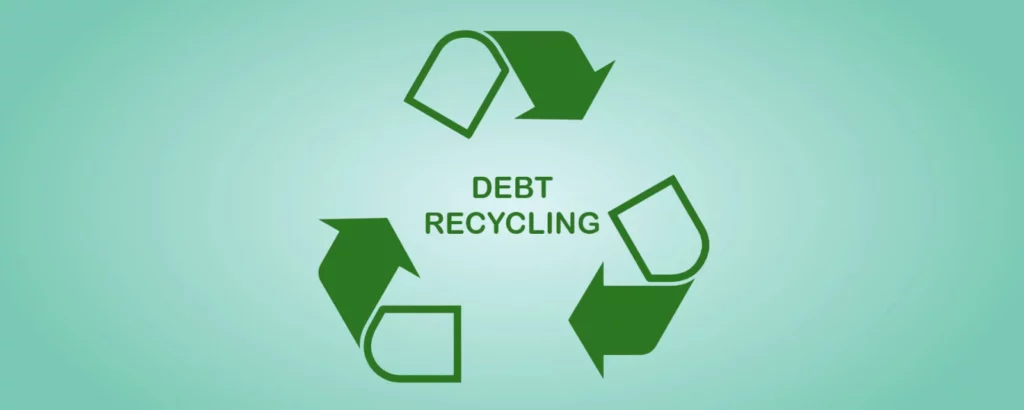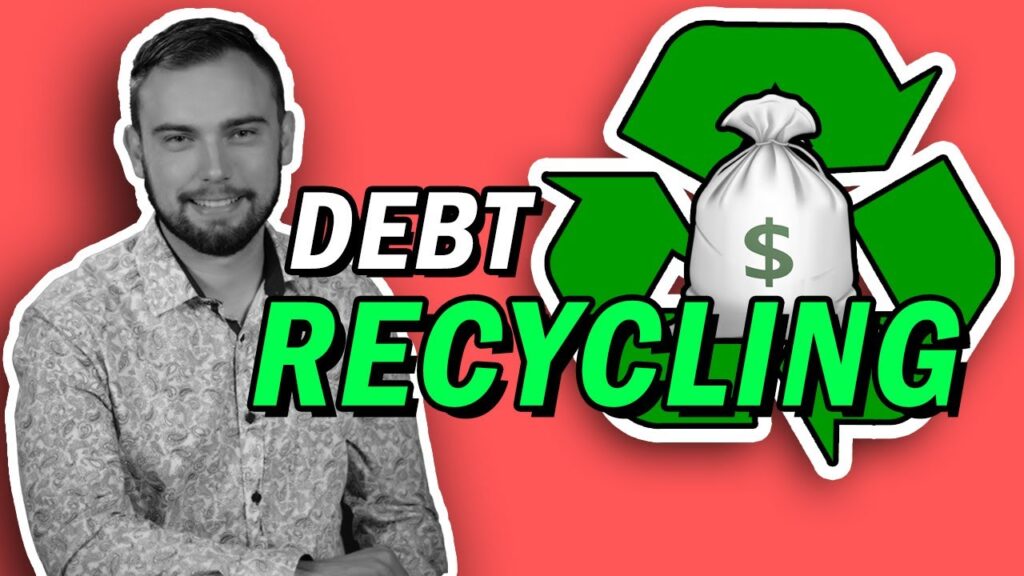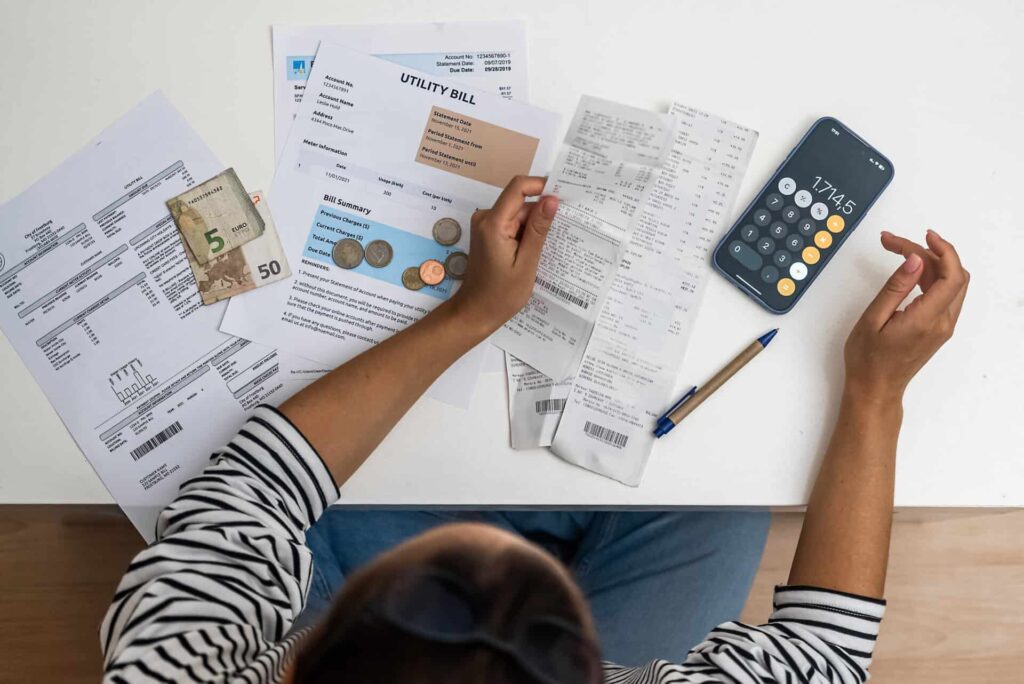In today’s society, many individuals find themselves burdened with various types of debts, ranging from student loans and credit card debt to mortgages and car loans. Paying off these debts can be overwhelming and time-consuming, especially if you’re living paycheck to paycheck. However, there are numerous debt reduction strategies that can help you regain control of your financial situation and pave the way to a debt-free future. One such strategy is debt recycling, a powerful tool that can accelerate loan repayment and ultimately help you pay off loans faster.
Understanding the Concept of Debt Reduction
Before we delve into the specifics of debt recycling Australia, it’s essential to grasp the importance of debt reduction and how it can positively impact your life. Debt reduction is the process of minimizing and eliminating debt, which in turn reduces financial stress, improves credit scores, and paves the way for financial freedom. By implementing effective debt reduction strategies, individuals can regain control of their finances and take significant strides towards achieving their financial goals.
The Importance of Debt Reduction
Debt reduction is not merely about improving one’s financial situation; it’s also about improving overall well-being. High levels of debt can cause excessive stress and anxiety, affecting mental and emotional health. Imagine the weight of financial burden lifted off your shoulders, the peace of mind that comes with knowing you are on a path to financial stability. By reducing debt, individuals can alleviate this burden and experience a sense of relief, leading to improved quality of life.

Furthermore, reducing debt enables individuals to free up their income, allowing them to invest in their future and build wealth. Imagine having extra money each month that can be directed towards savings or investments. This newfound financial flexibility opens up opportunities for personal growth and long-term financial security. Whether it’s saving for a dream vacation, starting a business, or planning for retirement, debt reduction plays a crucial role in creating a solid financial foundation.
Key Principles of Debt Reduction
When it comes to debt reduction, it’s important to understand and abide by some key principles. Firstly, it’s crucial to prioritize and tackle high-interest debts first, as they tend to accumulate more rapidly and can hinder your financial progress. By focusing on these debts, you can minimize the amount of interest paid over time and accelerate your journey towards debt freedom.
Secondly, making consistent and timely payments is vital to avoid late fees and penalties. By staying organized and ensuring that payments are made on time, you can avoid unnecessary charges and maintain a positive credit history. This, in turn, can improve your credit score and open doors to better financial opportunities in the future.
Thirdly, it’s crucial to create a budget and stick to it, ensuring that you have a clear understanding of your income, expenses, and debt repayment goals. By tracking your spending and identifying areas where you can cut back, you can allocate more funds towards debt repayment. A well-planned budget acts as a roadmap, guiding you towards financial success and helping you stay on track.
By adhering to these principles, you can lay a solid foundation for your debt reduction journey. Remember, debt reduction is a process that requires discipline and perseverance. However, the rewards are well worth the effort. As you make progress in reducing your debt, you’ll experience a renewed sense of control over your finances and a brighter financial future.
An Introduction to Debt Recycling
Now that we have a thorough understanding of debt reduction, let’s explore the concept of debt recycling. Debt recycling is a financial strategy that involves utilizing equity from appreciating assets, such as property or investments, to pay down non-deductible debt, such as personal loans or credit card debt. By doing so, individuals can effectively consolidate their debts and reduce the overall interest paid, leading to faster loan repayment.
What is Debt Recycling?
Debt recycling, in essence, involves redirecting the equity from appreciating assets towards paying off non-deductible debts. This enables individuals to convert non-tax-deductible debt into tax-deductible debt, creating potential tax benefits and wealth-building opportunities. By leveraging the equity in appreciating assets, individuals can accelerate debt repayment and shift their focus towards long-term wealth creation.
The Mechanics of Debt Recycling
Debt recycling involves a strategic approach to managing and repurposing assets and liabilities. Here’s a breakdown of the typical steps involved in the debt recycling process:
Assessing your existing debts:
Start by evaluating your current debts, including the interest rates, terms, and any potential tax implications.
Evaluating your assets:
Identify appreciating assets that have sufficient equity to be used for debt recycling purposes. This includes properties, investments, or any other valuable assets.
Refinancing or accessing equity:
Explore options to access the equity in your appreciating assets, such as refinancing your mortgage or taking out a home equity loan.
Redirecting funds:
Once you have accessed the equity, use the funds to pay off your non-deductible debts.
Monitoring and adjusting:
Continuously monitor your progress and make any necessary adjustments to ensure the success of your debt recycling strategy.
It’s important to note that debt recycling is not a one-size-fits-all solution. The effectiveness of this strategy depends on various factors, such as the individual’s financial goals, risk tolerance, and the performance of their assets. Before embarking on a debt recycling journey, it is advisable to seek professional advice from a financial advisor or planner who can provide personalized guidance based on your specific circumstances.
Furthermore, debt recycling requires discipline and careful planning. It is crucial to have a comprehensive understanding of your financial situation and to set realistic goals. Regularly reviewing and reassessing your strategy is essential to ensure that it aligns with your changing circumstances and objectives.
By implementing debt recycling, individuals can not only reduce their overall debt burden but also potentially benefit from tax advantages and wealth creation opportunities. It is a powerful financial strategy that, when executed effectively, can help individuals achieve their long-term financial goals and build a solid foundation for a secure and prosperous future.

The Role of Debt Recycling in Debt Reduction
Having understood the mechanics of debt recycling, let’s explore its role in debt reduction and how it can accelerate loan repayment.
Debt recycling is a strategic financial technique that involves leveraging the equity in appreciating assets to pay off non-deductible debt efficiently. This method not only helps in reducing debt but also in optimizing financial resources for long-term wealth creation. By understanding how debt recycling works, individuals can make informed decisions to improve their financial health and achieve their goals.
How Debt Recycling Accelerates Loan Repayment
Debt recycling expedites loan repayment by redirecting equity from appreciating assets towards paying off non-deductible debt. By utilizing the equity, individuals can make lump sum payments towards their debts, effectively reducing the principal amount and interest accrued. This accelerates the loan repayment process, allowing individuals to save on interest and pay off loans faster.
Moreover, debt recycling empowers individuals to take control of their financial situation by actively managing their debts and assets. This proactive approach not only speeds up the loan repayment process but also instills financial discipline and responsibility, leading to a more secure financial future.
The Financial Impact of Debt Recycling
In addition to accelerating loan repayment, debt recycling can have various financial benefits. Firstly, by converting non-deductible debt into tax-deductible debt, individuals may be eligible for potential tax benefits. Secondly, the interest saved through debt recycling can be redirected towards savings or investments, fostering long-term wealth creation. Furthermore, debt recycling can improve credit scores by reducing debt levels, opening doors to better financial opportunities in the future.
By understanding the financial impact of debt recycling, individuals can make informed decisions about their debt management strategies and work towards achieving financial freedom and stability. It is essential to consider the long-term implications of debt recycling and how it aligns with one’s financial goals and aspirations.

Implementing Debt Recycling as a Debt Reduction Strategy
Now that we have explored the concept and benefits of debt recycling, let’s dive into how you can effectively implement it as a debt reduction strategy. Debt recycling is a financial strategy that involves leveraging the equity in appreciating assets to pay off non-tax-deductible debts, such as personal loans or credit card balances. By utilizing this strategy, individuals can potentially reduce their overall debt burden while simultaneously building wealth through investments.
Steps to Start Debt Recycling
Begin by reviewing your financial situation and identifying appreciating assets that can be leveraged for debt recycling. This could include properties, shares, or other investments that have increased in value over time. Consult with financial advisors or mortgage brokers to explore refinancing options and access the equity in your assets. Refinancing can help you unlock the equity in your assets, providing you with the funds needed to pay off high-interest debts. Once you have accessed the funds, create a debt repayment plan, prioritizing high-interest debts first to minimize interest costs over time. Monitor your progress regularly and make adjustments as needed to ensure the success of your debt recycling strategy.
Precautions and Considerations in Debt Recycling
While debt recycling can be a powerful debt reduction strategy, it’s essential to proceed with caution and consider certain factors. Seek advice from financial professionals, such as accountants or financial planners, to fully understand the potential risks and benefits associated with debt recycling. Additionally, it’s crucial to have a solid understanding of the tax implications and financial commitments involved in this strategy. By carefully evaluating these factors, individuals can make informed decisions and effectively mitigate risks while maximizing the benefits of debt recycling.
One key consideration in debt recycling is the importance of maintaining a diversified investment portfolio. By spreading investments across different asset classes, individuals can reduce their exposure to risk and potentially increase their overall returns. It’s also important to regularly review and adjust your investment strategy to align with your financial goals and risk tolerance.
The Long-Term Benefits of Debt Recycling
As you embark on your debt recycling journey, it’s crucial to recognize the long-term benefits that await you.
Financial Freedom through Debt Recycling
By effectively implementing debt recycling as part of your debt reduction strategy, you can pave the way to financial freedom. Paying off loans faster not only eliminates the burden of debt but also allows you to redirect your financial resources towards other goals, such as saving for retirement or investing in your future. Debt recycling sets the stage for long-term financial stability and empowers you to take control of your financial future.
How Debt Recycling Contributes to Wealth Building
Debt recycling not only accelerates loan repayment but also opens up opportunities for wealth building. By leveraging the equity in appreciating assets, individuals can redirect funds towards investments that generate long-term returns. This, coupled with the tax benefits associated with debt recycling, can contribute to the creation of substantial wealth over time. Debt recycling acts as a stepping stone towards financial prosperity and enables individuals to build a robust financial portfolio.
In conclusion, debt reduction strategies are crucial for individuals grappling with the burden of loans. Debt recycling is a powerful tool that accelerates loan repayment and paves the way to financial freedom. By understanding the concept of debt reduction, grasping the mechanics of debt recycling, and implementing it effectively, individuals can pay off loans faster, save on interest, and build long-term wealth. Embark on your debt reduction journey today and take the first steps towards a debt-free and prosperous future.

